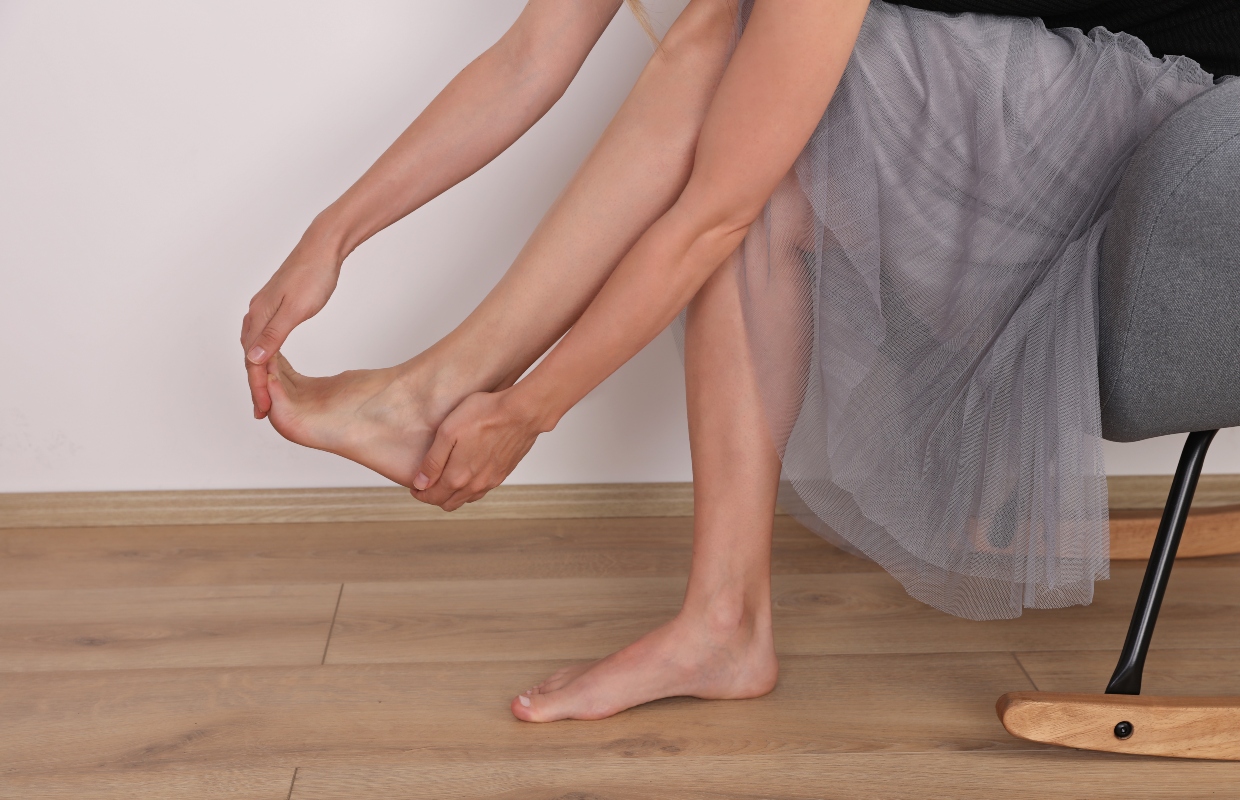Relieve Leg Pain with Acupuncture

It is springtime, and if you are like me, the warmer weather is ideal for a nice walk around the neighborhood to see all the new blooms and nature waking up from a long winter slumber. But, walking is painful. Running is out of the question. Sometimes your calves even hurt while relaxing in your home. You take pain relivers every day hoping to dull the pain but what can you do to prevent the pain in the first place?
You may be suffering from Plantar Fasciitis which is an inflammatory condition of the plantar fascia which is the ligament that lies directly beneath the skin on the bottom of your foot. It connects the heel to the front of your foot, and supports the arch of your foot. Those who suffer from Plantar Fasciitis tend to experience intense pain at the bottom of their heel which can then radiate up the leg causing discomfort in the ankle and calf.
What causes Plantar Fasciitis?
Plantar fasciitis is caused by overstretching and straining the sole of your foot. This can happen by inappropriate technique which exercising, wearing poorly cushioned shoes, excessive running or walking, standing up for too long, or carrying excess weight. When there is too much pressure on your feet, the ligament can become weak, damaged or torn causing inflammation, pain and stiffness. Pain is usually a sharp, stabbing pain in the heel or sole of the foot.
Can I do anything to prevent Plantar Fasciitis?
A good first step in preventing Plantar Fasciitis is to Invest in good quality sneakers for exercise and make sure they are shock absorbing to offer good ankle support. Avoid wearing high heels as they can put a compressive force on the heel. While being barefoot is desirable to many, going barefoot on hard surfaces is not advisable, especially if you have high arches or flat arches as it may increase heel pain.
Can acupuncture treat Plantar Fasciitis?
Acupuncture is very helpful for treating Plantar Fasciitis. By needling Acupuncture trigger release points, muscles are released in the lower leg and the bottom of the foot which is often the root cause for Plantar Fasciitis pain. The main trigger points used for addressing Plantar Fasciitis include muscles like gastrocnemius, soleus and parts of the calf and foot muscles.
The muscles are responsible for flexing the foot at the ankle joint and flexing the leg at the knee joint. The pain from the gastrocnemius and soleus can also cause Achilles’ pain, which can sometimes be mistaken for Plantar Fasciitis pain. Placing acupuncture needles in these specific trigger points can help to reduce your pain by releasing the muscle tightness and interrupting pain signals to the brain.
How Earley Wellness treats Plantar Fasciitis
At Earley Wellness, we would also use Gua Sha to treat Plantar Fasciitis. The Gua Sha technique uses a tool to apply pressure and scrape/massage the skin to relieve pain and to reduce swelling and tension. This treatment can cause light bruising, known as petechiae or sha.
We can also use dry cupping. Dry cupping involves positioning a cup on the skin and creating a vacuum to apply negative pressure. Negative pressure then increases blood flow to the area. So, instead of applying positive pressure to the fascia by massaging the damaged tissue, dry cupping applies negative pressure to the plantar surface, heels, and calved, allowing more blood to circulate and help promote healing and loosen the muscles and ligaments in these areas.